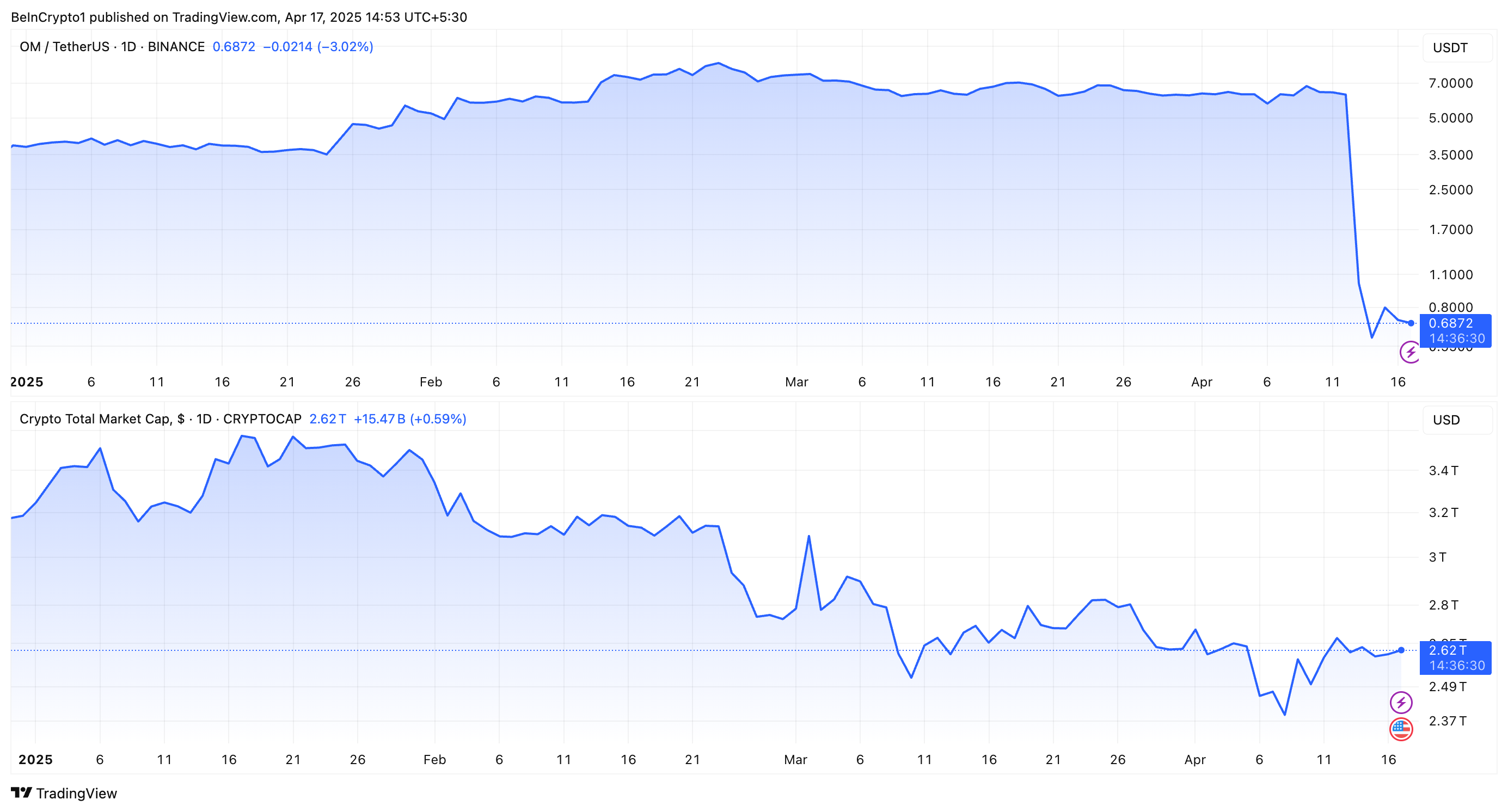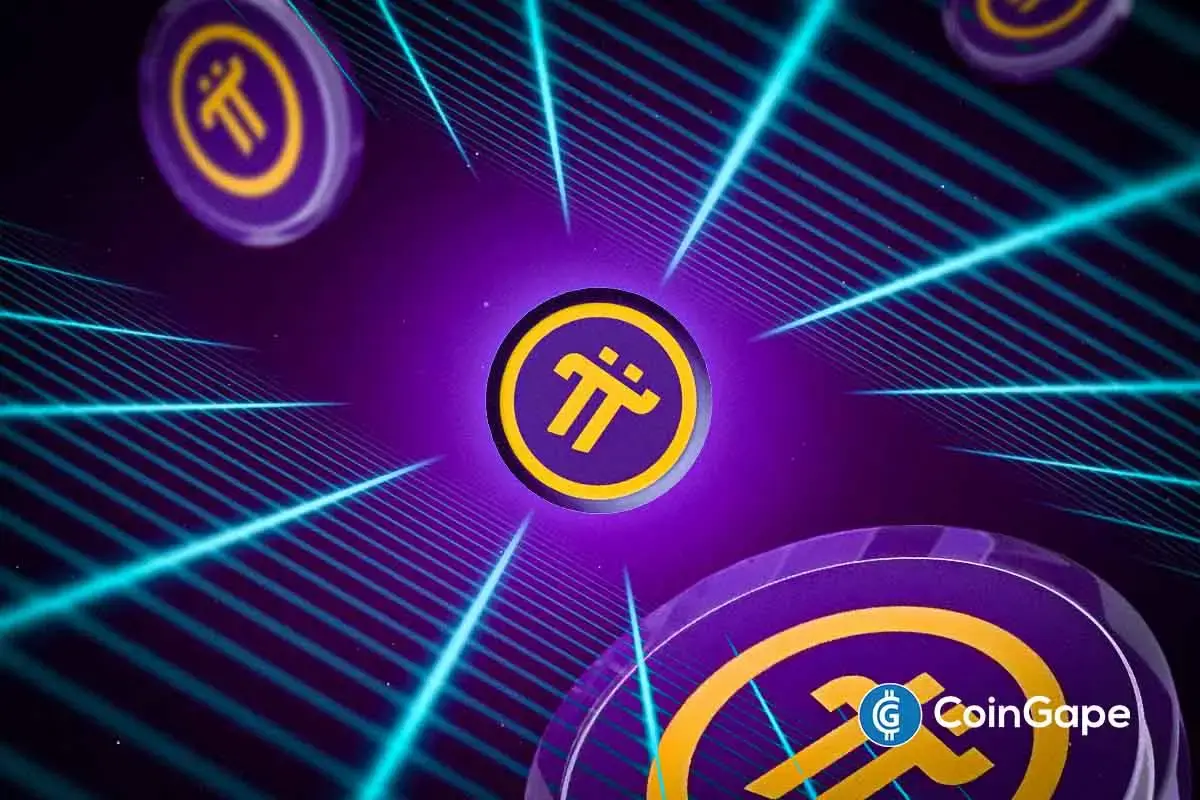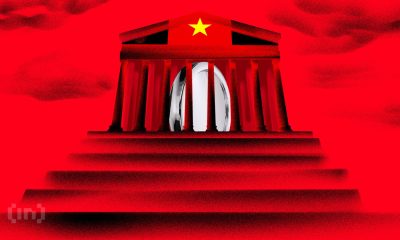Market
Reshaping the EU Crypto Market

Since its enaction two months ago, the Markets in Crypto-Assets (MiCA) regulation has created a cohesive framework and clear standards for digital asset issuers across the European Union (EU). The model aims to balance innovation and consumer protection, creating greater pathways for crypto adoption.
BeInCrypto spoke with Monerium, Moonpay, OKX, and Yellow Network experts to further understand what this unprecedented regulation means for EU-based crypto users and the challenges that remain for firms looking to set up shop in the region.
The EU Sets a Global Precedent
On December 30, 2024, the European Union made history by becoming the first region in the world to enact a widespread crypto regulation.
Crypto companies wanting to operate in the EU can obtain a single MiCA license to offer services across all member states, avoiding the hassle of getting separate permits for each country.
“MiCA sets a global benchmark as the most extensive regulatory framework for crypto assets to date, positioning the EU as a leader in shaping the future of digital finance and providing a blueprint for other jurisdictions to follow,” Erald Ghoos, CEO OF OKX Europe, told BeInCrypto.
Several regional crypto firms have already applied for MiCA and received licenses. Less than two weeks ago, Crypto.com became the first global crypto platform to receive full approval under the EU’s regulatory framework.
At the beginning of January, MoonPay, BitStaete, ZBD, and Hidden Road secured the MiCA license from the Dutch Authority for the Financial Markets (AFM). Standard Chartered closely followed suit when it gained its license in Luxembourg. Meanwhile, Boerse Stuttgart Digital Custody became Germany’s first crypto asset service provider to receive a full license.
MiCA Unified Licensing Regime
The crypto market has expanded considerably since Bitcoin’s launch over 15 years ago. Despite this growth, a consistent and comprehensive regulatory structure is still lacking in many parts of the world. This absence of clear rules can expose investors to risks and create vulnerabilities in consumer protection and market integrity.
The EU’s MiCA framework is designed to address these challenges while simultaneously promoting responsible growth within the cryptocurrency industry.
“Clear rules create a more predictable environment where serious players can thrive. MiCA is essentially giving the green light for the next chapter of crypto in Europe,” explained Alexis Sirkia, Co-Founder of Yellow Network.
MiCA’s standardized licensing process across the EU simplifies regulatory requirements and makes it easier for companies to operate within the European Economic Area. This framework also provides official recognition for the cryptocurrency industry.
“One of the biggest advantages of MiCA is its role in legitimizing the crypto asset industry, for both consumers and other companies, given its requirements and regulatory standards. This should consequently help build confidence in MiCA-regulated firms,” Matt Sullivan, Deputy General Counsel and Head of Ireland at MoonPay, told BeInCrypto.
The legislation also specifically works toward safeguarding the interests of consumers by keeping associated risks at bay and enhancing trust.
“MiCA enhances consumer protection through robust transparency requirements, stringent compliance measures, and oversight of stablecoin issuers. It also strengthens anti-money laundering (AML) and Know Your Customer (KYC) protocols, creating a safer, more secure, and trustworthy environment for market participants. This comprehensive framework paves the way for broader adoption and sustainable growth of the crypto ecosystem across Europe,” added Ghoos.
Despite its long list of advantages, MiCA’s framework also raises some considerations, particularly for smaller players.
A Rigorous Process
Compared to frameworks developed by other jurisdictions, MiCA’s legislation is particularly thorough.
“MiCA is definitely one of the most detailed and stringent frameworks out there. While places like Singapore and Hong Kong focus on fostering innovation with lighter-touch regulations, MiCA is all about building trust and security. It’s a different approach and less about speed and more about laying down a solid foundation,” said Sirkia.
Securing a MiCA license involves a step-by-step procedure. Crypto firms must first assess their eligibility and prepare all relevant documentation. Once submitted, the application undergoes a compliance review by the applicable regulatory authority.
“It will become more difficult for the classic example of two individuals with a novel idea to simply launch their crypto service or token to the public,” Sullivan said.
It might also create certain barriers to entry.
Obstacles for Smaller Players
This process can be particularly burdensome for small players or newer crypto firms seeking services in the European Union.
“While MiCA brings much-needed regulation, it also introduces higher compliance costs and operational burdens, particularly for smaller crypto businesses. Companies will have to navigate complex reporting requirements, stringent capital reserves for stablecoin issuers, and strict disclosure obligations,” Ghoos explained.
The framework also requires companies to have a base of operations in the EU.
“For smaller players, the requirements, such as maintaining a physical presence in the EU and holding significant capital reserves, can feel like a high hurdle. It risks shutting out startups that could bring fresh ideas to the table,” said Sirkia.
Some critics have said that this sort of regulation favors established crypto firms, creating barriers to entry for newer players. Larger companies with sufficient resources to overcome these obstacles do so anyway, given the significant opportunities of operating across such a large region.
“Those who manage to navigate the regulations will find themselves in a more secure and stable environment, with access to a massive market of 450 million people. It’s a challenge, yes, but it could also be a badge of legitimacy,” Sirkia said.
Beyond this, the MiCA regulation has also presented concerns regarding user privacy.
KYC Requirements Generate Privacy Concerns
MiCA implements AML and KYC protocols to create a safer, more secure, and trustworthy environment for market participants. However, it also raises some security concerns for users.
“On the user side, there’s concern about privacy. The stricter KYC rules, while aimed at security, could make some people uneasy about how their data is handled,” Sirkia said.
The extensive data collection and storage required by Know Your Customer (KYC) regulations conflict with individual privacy rights, raising concerns about data security, potential misuse, and unauthorized access.
“MiCA’s KYC rules are designed to prevent fraud and boost security, but they do raise eyebrows when it comes to privacy. Collecting and storing so much personal data creates risks. What happens if that data is hacked or misused? Users who value their privacy might turn to less regulated platforms, which is exactly what MiCA is trying to avoid. It’s a fine line to walk, and how the EU handles these concerns will be critical in building user trust,” Sirkia added.
Looking past these concerns, the most debated aspect of MiCA has been its regulation of stablecoins.
Stablecoin Issuers Face Significant Hurdles
Stablecoins are cryptocurrencies designed to maintain a stable value, typically by being pegged to another asset like gold or fiat currency. This makes them popular with investors seeking to engage with digital assets while mitigating price volatility.
The stringent nature of MiCA’s stablecoin regulations has been a key point of contention.
“MiCA will require all stablecoin issuers to maintain more than 1:1 backing with liquid reserves and obtain proper authorization as electronic money institutions. This will particularly impact unauthorized stablecoin issuers who have been operating in Europe without the appropriate e-money licenses, as they’ll need to either comply with these stricter requirements or cease operations in the EU,” Jón Helgi Egilsson, Co-Founder of Monerium and former Chairman of the Central Bank of Iceland, told BeInCrypto.
To that point, Sirkia added:
“Stablecoins are going to feel the MiCA effect in a big way. Issuers will need to step up their game with more transparency and stronger reserves. For USDC, which already operates under a pretty robust framework, the transition might be smoother. But for others, like USDT, it could mean more scrutiny and possibly some big adjustments.”
As soon as MiCA took effect, Tether’s USDT experienced a $2 billion drop in market capitalization– the biggest since the FTX collapse. Even before MiCA’s enactment, centralized exchanges like Coinbase began restricting USDT, while EU exchanges were directly ordered to delist the stablecoin en masse.

While USDT hasn’t yet met MiCA’s stablecoin regulation, its criteria have sparked debate. Some critics argue that they give traditional financial institutions a considerable advantage.
Three days before MiCA’s launch, Tether CEO Paolo took to social media to call out the framework’s requirements for stablecoin issuers.
“MiCA is nothing but a massive gift to the traditional banking system. Forcing stablecoin issuers to hold >30% of their liquidity in banks only ensures more profits for the legacy players. Its regulation designed to benefit the old system, not innovation,” read Diomede’s X post.
Egilsson explained that this policy significantly influences banks over their competitors’ operations and licensing.
“In extreme cases stablecoin issuers will have to safeguard up to 60% of funds with up to 12 commercial banks. Placing banks as intermediaries is like handing them the keys as gatekeepers to monitor their competitors and determine if their competitors will get a license to operate since a business relationship with multiple banks is now a requirement by EU law under MiCA,” he said.
Using traditional banks as intermediaries between stablecoin providers and consumers directly also opposes the idea of decentralization, according to Egilsson.
“It is simply absurd and a misuse of public EU legislation power in order to try to preserve the status quo for EU banks. To demand banks to be intermediaries doesn’t align with either the ethos of web3 or is it a fair playing field that would facilitate innovation,” he told BeInCrypto.
Egilsson also pointed out that USDT continues to operate within the European Union despite MiCA being in effect.
“Before MiCA, stablecoins fell under EU law as e-money, but EU legislators did not enforce it. The promise made by EU legislators was that enforcement will now follow. Yet, the legislation has taken effect, but unauthorized stablecoins continue to be offered. Regulation is one thing, enforcement is another. If enforcement remains as lax as it was before MiCA, one might ask: why bother regulating at all?” he said.
Regardless, Tether’s lack of full MiCA compliance creates risks, such as potential penalties, fines, or even an EU-based ban on USDT.
MiCA and the Future of Crypto Regulation
Despite certain pain points, most industry experts believe MiCA is a groundbreaking piece of legislation that could inspire similar regulations in other jurisdictions.
Given that the framework has only been in effect for a little over two months, the likelihood that it will be revised in the future is high– especially considering that the crypto industry is under a constant state of transformation.
“All regulations evolve, and MiCA will likely be no different. This evolution could be driven by increased crypto adoption, but it could also be driven by other factors such as technological progress. To use payment regulation as an example of natural regulatory progression, the EU is currently preparing the third Payment Services Directive (PSD3), a natural evolution of the earlier payment directives, PSD and PSD2,” Sullivan noted.
As Web3 evolves and new technologies emerge, MiCA must be updated to address them.
“The crypto space moves fast, and the framework will need to keep up. As adoption grows and new technologies like DeFi and NFTs become more mainstream, we’ll likely see updates to address these areas. The EU has set the bar high with MiCA, but staying relevant in a constantly evolving industry will require ongoing dialogue with the crypto community and flexibility in the regulatory approach,” said Sirkia.
If other countries adopt similar regulations, the EU may revise MiCA to remain competitive.
“As other jurisdictions develop their own crypto laws, the EU may refine MiCA to remain competitive and aligned with global standards, ensuring that Europe continues to be a leader in crypto regulation,” Ghoos explained.
In the future, a collaboration between industry players and regulators will be crucial in ensuring that these frameworks continue to protect consumers while developing an environment that fosters innovation.
Disclaimer
Following the Trust Project guidelines, this feature article presents opinions and perspectives from industry experts or individuals. BeInCrypto is dedicated to transparent reporting, but the views expressed in this article do not necessarily reflect those of BeInCrypto or its staff. Readers should verify information independently and consult with a professional before making decisions based on this content. Please note that our Terms and Conditions, Privacy Policy, and Disclaimers have been updated.
Market
Technical Analyst Warns Ripple’s XRP Price Could drop 50%

Veteran market analyst Peter Brandt has issued a gloomy year-end forecast for XRP, suggesting the asset may struggle to maintain its momentum despite recent gains.
On April 18, Brandt shared his updated analysis on X (formerly Twitter), projecting two possible scenarios for XRP’s market capitalization by year’s end.
Cautionary Outlook for XRP Despite Recent Surge
The first scenario places XRP’s market cap around $116.67 billion, while the second offers a more bearish outlook of just above $60 billion.
Essentially, both figures imply a decline from XRP’s current valuation of roughly $2.09 per token at a market capitalization of $121 billion.

Brandt’s analysis is based on a technical pattern he previously identified on XRP’s price chart.
According to him, the formation resembles a classic head-and-shoulders setup—a pattern that often signals a trend reversal. If this plays out, XRP could fall as low as $1.07.
He added then that a move below $1.90 would confirm the pattern and likely trigger a steep correction of more than 50%. However, a break above $3 could invalidate the bearish outlook.
“XRP is forming a textbook H&S pattern. So, we are now range bound. Above 3.000 I would not want to be short. Below 1.9 I would not want to own it,” Brandt explained.
This cautious forecast follows a remarkable surge in XRP’s price since late 2024.
Following Donald Trump’s return to the White House, the token rallied over 300%, reaching a high of $3.28 before pulling back to its current level.
This price performance has led many investors to believe that the Trump administration’s friendlier stance toward digital assets could help the asset continue its rally.
One major catalyst was the Securities and Exchange Commission’s (SEC) decision to drop several lawsuits against crypto companies, including Ripple.
That shift reduced regulatory uncertainty and sparked renewed interest in XRP, culminating in the launch of exchange-traded funds (ETFs) focused on the product.
Adding to the momentum, Ripple launched its own stablecoin, RLUSD, aiming to tap into a growing segment of the digital asset market.
Still, Brandt’s warning suggests that XRP’s recent rally may not be sustainable if bearish pressure intensifies.
Ripple Not Rushing Into IPO Despite Industry Trend
Amid renewed attention on XRP’s performance, Ripple CEO Brad Garlinghouse has addressed growing speculation about the company going public.
In a recent video shared on X, Garlinghouse made it clear that Ripple does not plan to file for an IPO in 2025.
He emphasized that the company is not actively seeking external funding because it remains financially stable and is prioritizing product development and business expansion.
“Will we IPO in 2025? I think that’s a definitive no…We’ve said there’s no imminent plans to go public,” Garlinghouse stated.
While the company isn’t moving forward with an IPO this year, Garlinghouse didn’t completely close the door.
He noted that Ripple is evaluating whether going public would benefit the business in the long run. However, such a move isn’t a current priority.
“You have to ask yourself, okay, how does Ripple benefit from being a public company? And is it a high priority for us?” he said.
Moreover, Garlinghouse also hinted that the regulatory landscape—especially under new leadership at the SEC—could influence Ripple’s future decisions.
His comments come as several crypto firms, including Kraken and Ciecle, reportedly prepare for IPOs. For now, though, Ripple appears comfortable staying private until conditions become more favorable.
Disclaimer
In adherence to the Trust Project guidelines, BeInCrypto is committed to unbiased, transparent reporting. This news article aims to provide accurate, timely information. However, readers are advised to verify facts independently and consult with a professional before making any decisions based on this content. Please note that our Terms and Conditions, Privacy Policy, and Disclaimers have been updated.
Market
SUI Ranks 5th in DEX Volume, But Rally Lacks Strength

SUI blockchain has been gaining traction in recent weeks, and its market cap is now approaching $7 billion. Fueled by meme coin activity and rising DeFi engagement, the network has seen a notable jump in DEX volume and technical momentum.
While indicators like RSI and EMA lines show early signs of a potential trend shift, overall strength remains mixed. SUI sits at a key crossroads—supported by short-term excitement but still needing stronger confirmation to challenge top-tier chains.
SUI Surges to 5th in DEX Volume, But Still Trails Top Chains
SUI’s recent surge in DEX activity has grabbed attention, largely fueled by growing interest in meme coins and speculative trading on its ecosystem. Over the past seven days, SUI’s DEX volume hit $2.1 billion, marking a 4.49% increase and continuing its steady upward trend.
This momentum has helped SUI outperform other ecosystems, most notably surpassing Arbitrum in the past 24 hours to become the fifth-largest chain by DEX volume.
However, despite the short-term gains, SUI still trails well behind top-tier networks like Base, BNB Chain, Ethereum, and Solana in total DEX activity.

These established ecosystems continue to dominate in terms of liquidity, user base, and overall transaction volume.
While SUI’s rise is notable, especially given its relatively new position in the DeFi ecosystem, it will need to sustain this growth and diversify beyond meme coin hype to truly challenge the leading players.
For now, it remains an exciting underdog with momentum—but not yet a major contender.
SUI Momentum Rebuilds, But Trend Remains Weak
SUI’s RSI is now at 51.86, up from 35.22 just three days ago. This suggests buying pressure has returned after a short-term dip, helping stabilize price action.
The Relative Strength Index (RSI) measures momentum on a scale from 0 to 100. Readings above 70 are considered overbought, while those below 30 indicate oversold conditions.

Sitting near the midpoint, SUI’s RSI points to neutral momentum. It hasn’t crossed above 70 in almost a month, showing that bullish strength has remained limited.
Meanwhile, SUI’s DMI (Directional Movement Index) shows that its ADX is down to 9 from 14.79 just two days ago. The ADX measures trend strength, and anything below 20 signals a weak or nonexistent trend.

The +DI is at 15.83 while the -DI is at 13.15, meaning buyers have a slight edge—but the low ADX suggests that edge isn’t strong. There’s no clear trend dominating the market right now.
Together, the RSI and DMI suggest that SUI is in a consolidation phase. Buyers are showing some activity, but not enough to build a strong, sustained trend—at least for now.
EMA Setup Still Bearish, But SUI Bulls Show Signs of Life
SUI’s EMA lines are still showing a bearish setup, with short-term averages sitting below the long-term ones. However, the gap between them has narrowed, and a potential golden cross may be forming.
A golden cross occurs when a short-term EMA crosses above a long-term one, often seen as a bullish signal. If this plays out, SUI could gain momentum and push toward the $2.28 resistance level.

Breaking above that could open the path toward $2.41 and $2.54. If bullish momentum builds further, SUI blockchain could even test the $2.83 level—its highest since early March.
But if the market fails to hold current levels and selling pressure returns, a correction could begin. In that case, it might fall back to test the $2.02 support.
Losing that support could bring deeper downside, potentially pushing SUI toward $1.71. For now, price action is at a critical point, with both breakout and breakdown scenarios on the table.
Disclaimer
In line with the Trust Project guidelines, this price analysis article is for informational purposes only and should not be considered financial or investment advice. BeInCrypto is committed to accurate, unbiased reporting, but market conditions are subject to change without notice. Always conduct your own research and consult with a professional before making any financial decisions. Please note that our Terms and Conditions, Privacy Policy, and Disclaimers have been updated.
Market
5 Crucial Red Flags Investors Missed

The collapse of the MANTRA (OM) token has left investors reeling, with many facing significant losses. As analysts comb through the causes of the collapse, many questions remain.
BeInCrypto consulted industry experts to identify five critical red flags behind MANTRA’s downfall and reveal strategies investors can adopt to steer clear of similar pitfalls in the future.
MANTRA (OM) Crash: What Investors Missed and How to Avoid Future Losses
On April 13, BeInCrypto broke the news of OM’s 90% crash. The collapse raised several concerns, with investors accusing the team of orchestrating a pump-and-dump scheme. Experts believe that there were many early signs of trouble.
Yet, many overlooked the risks associated with the project.
1. MANTRA Red Flag: OM Tokenomics
In 2024, the team changed OM’s tokenomics after a community vote in October. The token migrated from an ERC20 token to the native L1 staking coin for the MANTRA Chain.
In addition, the project adopted an inflationary tokenomic model with an uncapped supply, replacing the previous hard cap. As part of this transition, the total token supply was also increased to 1.7 billion.
However, the move wasn’t without drawbacks. According to Jean Rausis, co-founder of SMARDEX, tokenomics was a point of concern in the OM collapse.
“The project doubled its token supply to 1.77 billion in 2024 and shifted to an inflationary model, which diluted its original holders. Complex vesting favored insiders, while low circulating supply and massive FDV fueled hype and price manipulation,” Jean Rausis told BeInCrypto.
Moreover, the team’s control over the OM supply also raised centralization concerns. Experts believe this was also a factor that could have led to the alleged price manipulation.
“About 90% of OM tokens were held by the team, indicating a high level of centralization that could potentially lead to manipulation. The team also maintained control over governance, which undermined the project’s decentralized nature,” said Phil Fogel, co-founder of Cork.

Strategies to Protect Yourself
Phil Fogel acknowledged that a concentrated token supply isn’t always a red flag. However, it’s crucial for investors to know who holds large amounts, their lock-up terms, and whether their involvement aligns with the project’s decentralization goals.
Moreover, Ming Wu, the founder of RabbitX, also argued that analyzing this data is essential to uncover any potential risks that could undermine the project in the long term.
“Tools like bubble maps can help identify potential risks related to token distribution,” Wu advised.
2. OM Price Action
2025 has been marked as the year of significant market volatility. The broader macroeconomic pressures have weighed heavily on the market, with the majority of the coins experiencing steep losses. Yet, OM’s price action was relatively stable until the latest crash.

“The biggest red flag was simply the price action. The whole market was going down, and nobody cared about MANTRA, and yet its token price somehow kept pumping in unnatural patterns – pump, flat, pump, flat again,” Jean Rausis disclosed.
He added that this was a clear sign of a potential issue or problem with the project. Nevertheless, he noted that identifying the differentiating price action would require some technical analysis know-how. Thus, investors lacking the knowledge would have easily missed it.
Despite this, Rausis highlighted that even the untrained eye could find other signs that something was off, ultimately leading to the crash.
Strategies to Protect Yourself
While investors remained optimistic about OM’s resilience amid a market downturn, this ended up costing them millions. Eric He, LBank’s Community Angel Officer, and Risk Control Adviser emphasized the importance of proactive risk management to avoid OM-style collapses.
“First, diversification is key—spreading capital across projects limits single-token exposure. Stop-loss triggers (e.g., 10-20% below buy price) can automate damage control in volatile conditions,” Eric shared with BeInCrypto.
Ming Wu had a similar perspective, emphasizing the importance of avoiding over-allocation to a single token. The executive explained that a diversified investment strategy helps mitigate risk and enhances overall portfolio stability.
“Investors can use perpetual futures as a risk management tool to hedge against potential price declines in their holdings,” Wu remarked.
Meanwhile, Phil Fogel advised focusing on a token’s liquidity. Key factors include the float size, price sensitivity to sell orders, and who can significantly impact the market.
3. Project Fundamentals
Experts also highlighted major discrepancies in MANTRA’s TVL. Eric He pointed out a significant gap between the token’s fully diluted valuation (FDV) and the TVL. OM’s FDV reached $9.5 billion, while its TVL was only $13 million, indicating a potential overvaluation.
“A $9.5 billion valuation against $13 million TVL, screamed instability,” Forest Bai, co-founder of Foresight Ventures, stated.
Notably, several issues were also raised regarding the airdrop. Jean Rausis called the airdrop a “mess.” He cited many issues, including delays, frequent changes to eligibility rules, and the disqualification of half the participants. Meanwhile, suspected bots were not removed.
“The airdrop disproportionately favored insiders while excluding genuine supporters, reflecting a lack of fairness,” Phil Fogel reiterated.
The criticism expanded further as Fogel pointed out the team’s alleged associations with questionable entities and ties to questionable initial coin offerings (ICOs), raising doubts about the project’s credibility. Eric He also suggested that MANTRA was allegedly tied to gambling platforms in the past.
Strategies to Protect Yourself
Forest Bai underscored the importance of verifying the project team’s credentials, reviewing the project roadmap, and monitoring on-chain activity to ensure transparency. He also advised investors to assess community engagement and regulatory compliance to gauge the project’s long-term viability.
Ming Wu also stressed distinguishing between real growth and artificially inflated metrics.
“It’s important to differentiate real growth from activity that’s artificially inflated through incentives or airdrops, unsustainable tactics like ‘selling a dollar for 90 cents’ may generate short-term metrics but don’t reflect actual engagement,” Wu informed BeInCrypto.
Finally, Wu recommended researching the background of the project’s team members to uncover any history of fraudulent activity or involvement in questionable ventures. This would ensure that investors are well-informed before committing to any project.
4. Whale Movements
As BeInCrypto reported earlier, before the crash, a whale wallet reportedly associated with the MANTRA team deposited 3.9 million OM tokens into the OKX exchange. Experts highlighted that this wasn’t an isolated incident.
“Large OM transfers (43.6 million tokens, ~$227 million) to exchanges days prior were a major warning of potential sell-offs,” Forest Bai conveyed to BeInCrypto.
Ming Wu also explained that investors should pay close attention to such large transfers, which often act as warning signals. Moreover, analysts at CryptoQuant also outlined what investors should look out for.
“OM transfers into exchanges amounted to as much as $35 million in just an hour. This represented an alert sign as: Transfers into exchanges are below $8 million in a typical hour (excluding transfers into Binance, which are typically large given the size of the exchange). Transfers into exchanges represented more than a third of the total OM transferred, which indicates a high transfer volume into exchanges,” CryptoQuant informed BeInCrypto.
Strategies to Protect Yourself
CryptoQuant stated that investors need to monitor the flows of any token into exchanges, as it could indicate increasing price volatility in the near future.
Meanwhile, Risk Control Adviser Eric He outlined four strategies to stay up-to-date when it comes to large transfers.
- Chain Sleuthing: Tools like Arkham and Nansen allow investors to track large transfers and monitor wallet activity.
- Set Alerts: Platforms like Etherscan and Glassnode notify investors of unusual market movements.
- Track Exchange Flows: Users need to track large flows into centralized exchanges.
- Check Lockups: Dune Analytics helps investors determine if team tokens are being released earlier than expected.
He also recommended focusing on the market structure.
“OM’s crash proved market depth is non-negotiable: Kaiko data showed 1% order book depth collapsed 74% before the fall. Always check liquidity metrics on platforms like Kaiko; if 1% depth is below $500,000, that’s a red flag,” Eric revealed to BeInCrypto.
Additionally, Phil Fogel underlined the importance of monitoring platforms like X (formerly Twitter) for any rumors or discussions about possible dumps. He stressed the need to analyze liquidity to assess whether a token can handle sell pressure without causing a significant price drop.
5. Centralized Exchange Involvement
After the crash, MANTRA CEO JP Mullin was quick to blame centralized exchanges (CEXs). He said the crash was triggered by “reckless forced closures” during low-liquidity hours, alleging negligence or intentional positioning. Yet Binance pointed to cross-exchange liquidations.
Interestingly, experts were slightly divided on how CEXs contributed to OM’s crash. Forest Bai claimed that CEX liquidations during low-liquidity hours worsened the crash by triggering cascading sell-offs. Eric He corroborated this sentiment.
“CEX liquidations played a major role in the OM crash, acting as an accelerant. With thin liquidity—1% depth falling from $600,000 to $147,000—forced closures triggered cascading liquidations. Over $74.7 million was wiped in 24 hours,” he mentioned.
Yet, Ming Wu called Mullin’s explanation “just an excuse.”
“Analyzing the open interest in the OM derivatives market reveals that it was less than 0.1% of OM’s market capitalization. However, what’s particularly interesting is that during the market collapse, open interest in OM derivatives actually increased by 90%,” Wu expressed to BeInCrypto.
According to the executive, this challenges the idea that liquidations or forced closures caused the price drop. Instead, it indicates that traders and investors increased their short positions as the price fell.
Strategies to Protect Yourself
While the involvement of CEXs remains debatable, the experts did address the key point of investor protection.
“Investors can limit leverage to avoid forced liquidations, choose platforms with transparent risk policies, monitor open interest for liquidation risks, and hold tokens in self-custody wallets to reduce CEX exposure,” Forest Bai recommended.
Eric He also advised that investors should mitigate risks by adjusting leverage dynamically based on volatility. If tools like ATR or Bollinger Bands signal turbulence, exposure should be reduced.
He also recommended avoiding trading during low-liquidity periods, such as midnight UTC, when slippage risks are highest.
The MANTRA (OM) collapse is a powerful reminder of the importance of due diligence and risk management in cryptocurrency investments. Investors can minimize the risk of falling into similar traps by carefully assessing tokenomics, monitoring on-chain data, and diversifying investments.
With expert insights, these strategies will help guide investors toward smarter, more secure decisions in the crypto market.
Disclaimer
In adherence to the Trust Project guidelines, BeInCrypto is committed to unbiased, transparent reporting. This news article aims to provide accurate, timely information. However, readers are advised to verify facts independently and consult with a professional before making any decisions based on this content. Please note that our Terms and Conditions, Privacy Policy, and Disclaimers have been updated.
-

 Market19 hours ago
Market19 hours agoCardano (ADA) Moves Sideways, But Bullish Shift May Be Brewing
-

 Altcoin15 hours ago
Altcoin15 hours agoAnalyst Reveals Dogecoin Price Can Reach New ATH In 55 Days If This Happens
-

 Market22 hours ago
Market22 hours agoXRP Consolidation About To Reach A Bottom, Wave 5 Says $5.85 Is Coming
-

 Altcoin18 hours ago
Altcoin18 hours agoPi Coin Price Soars As Pi Network Reveals Massive Community Reward Plans.
-

 Altcoin24 hours ago
Altcoin24 hours agoChainlink Price To Hit $26 If LINK Breaks Past This Crucial Level
-

 Market21 hours ago
Market21 hours agoCanary Capital Aims to Launch TRON-Focused ETF
-

 Altcoin9 hours ago
Altcoin9 hours agoCardano Bulls Secure Most Important Signal To Drive Price Rally
-

 Market15 hours ago
Market15 hours agoBinance Mandates KYC Re-Verification For India Users






















